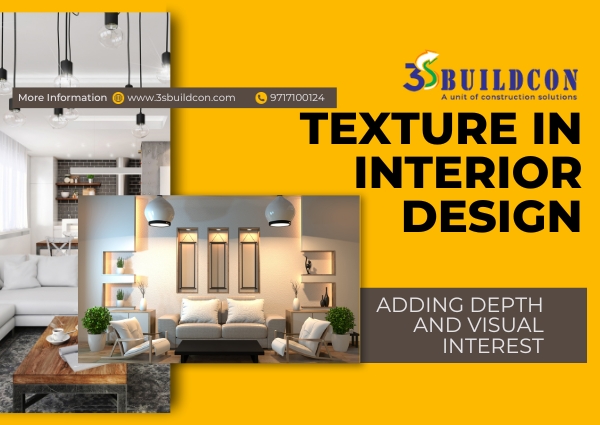As an interior design enthusiast, you’re likely aware that every element of a room contributes to its overall appeal. While color, furniture, and layout play vital roles, the often-underappreciated element of texture has the power to transform a space dramatically. In this blog, we’ll explore the fascinating world of textures in interior design and how they can add depth and visual interest to your living spaces.
Understanding the Importance of Texture
Texture is the quality of a surface or material that can be seen and felt. In interior design, it’s about how the visual and tactile aspects of various materials come together to create an atmosphere. The importance of texture cannot be understated. It contributes to the overall feel of a room, creating a sensory experience that goes beyond what the eye can see
Types of Texture
Textures can be categorized into two main types:
- Tactile Texture: This pertains to the physical feel of a surface. For instance, a plush velvet sofa, a rough stone fireplace, or a smooth glass tabletop.
- Visual Texture: Visual texture, on the other hand, is the appearance of a surface and how it appears to the eye. Patterns, finishes, and materials all contribute to visual texture.
Incorporating Texture in Interior Design
The key to successful interior design is effectively incorporating textures into your spaces. Here’s how you can do it:
– Choose the Right Textures: Select textures that complement the style and mood you want to create in a room. For example, a mix of warm, rustic textures can create a cozy atmosphere, while sleek, glossy textures convey a modern feel.
– Introduction of Texture: You can introduce texture through furniture, fabrics, accessories, and architectural elements. From a shaggy area rug to a stucco accent wall, these choices add character to your space.
– Mix and Match: Don’t be afraid to combine different textures within a room. A mix of textures often adds more depth and visual intrigue. Imagine the interplay of smooth leather with rustic wood, or the contrast between a glossy glass coffee table and a plush, textured rug.
Case Studies
To illustrate the transformative power of texture, let’s delve into a few case studies:
Case Study 1: The Cozy Living Room Makeover
In one of our projects, we transformed a minimalist living room with the addition of warm, textured elements. We incorporated a plush, upholstered sofa with tactile appeal, paired with rich, textured throw pillows. The visual texture was enhanced by a unique, reclaimed wood coffee table, creating a cozy and inviting space.
Case Study 2: The Modern Kitchen Upgrade
For a sleek, modern kitchen, we added visual texture through the use of glossy, subway-style tiles as a backsplash. This contrasted with the tactile appeal of smooth quartz countertops and a matte-finished island, creating a kitchen with depth and visual interest.
DIY Tips for Adding Texture
If you’re looking to add texture to your space without a major overhaul, here are some DIY tips:
-Accent Walls: Consider textured wallpapers or paint techniques for accent walls.
– Textured Fabrics: Add textured throws, cushions, and curtains to your decor.
– Gallery Wall: Create a gallery wall with textured frames and artwork.
– Area Rugs: Invest in area rugs that bring tactile and visual interest.
Conclusion
Texture is a design element that often goes unnoticed but plays a pivotal role in interior design. It’s the fine details and thoughtful selection of materials that can transform a space from ordinary to extraordinary. As you embark on your interior design journey, remember that textures are your allies in creating depth, visual interest, and atmosphere in your living spaces. Feel free to reach out to 3s buildcon for expert guidance on incorporating textures into your home or workspace.

